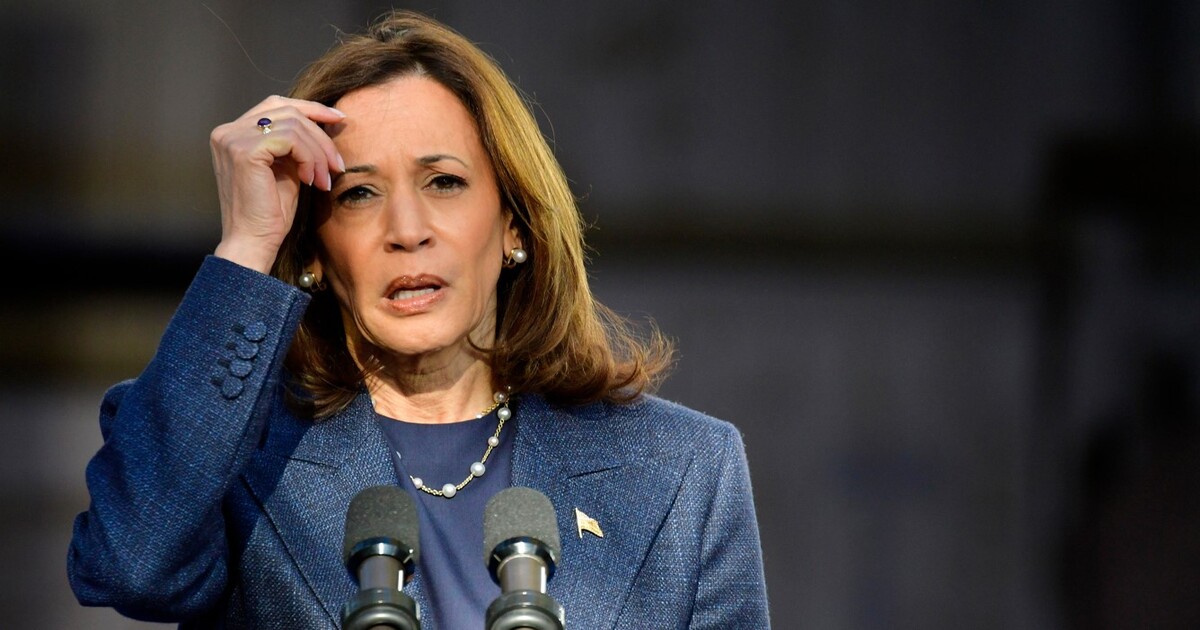Is This 2016 All Over Again?
Is the upcoming November U.S. presidential election shaping up to be a repeat of the 2016 battle between Donald Trump and Hillary Clinton?
October 2, 2024

I have the sinking feeling that we could see a repeat of the 2016 election this year. One candidate, obviously bright and capable, has broad experience in government.
The other candidate pushes racist themes, admires tyrants and was woefully incompetent in the White House. A large group of historians overwhelmingly chose him as the worst President in U.S. history.
In their recent debate, the Democratic candidate was professional and composed, putting forth specific policy proposals. The Republican candidate was often barely coherent and frequently seemed unhinged, even before he gave “cat food” a new definition. Yet the polls show that the race is basically a toss-up.
A common denominator between the two elections, of course, is that the Democratic candidate is a woman. And this time, a woman who is Black and Asian.
Polls show a statistical tie
Vice President Kamala Harris appears to have a 2% lead over Donald Trump on a national level, 49% to 47%, according to the New York Times Siena College poll. But that is within the typical margin of error (4%).
Polls in the fall of 2016 indicated that Hillary Clinton held a slim lead nationally — but also within the margin of error. If a decent candidate cannot generate a large lead outside the margin of error over a deeply flawed candidate like Trump, that is a warning signal.
In any case, under our bizarre system, winning the popular vote nationwide does not count.
If we look at the seven battleground states that will decide the election, we see a similar picture. Harris has only a one-to-two-point lead in Michigan, Nevada, Pennsylvania and Wisconsin — all within the margin of error. Meanwhile, Trump leads by five points in Arizona, four in Georgia and two in North Carolina.
Warning signs in Arizona and Nevada
The Arizona and Nevada polls are especially cause for concern. Latinos represent about one-third of eligible voters in each state, and they usually lean Democratic. Nevada has been a Democratic bastion for decades — its workers are heavily unionized.
In Arizona, a measure to protect abortion rights is on the ballot, and it is expected to pass by a wide margin. Keri Lake, the extreme-MAGA candidate running for the Senate, is trailing Ruben Gallego, her Democratic opponent, by six points.
So why is Harris struggling in these two states? Illegal immigration and inflation are probably her main challenges. After all, on a national basis, most voters trust Trump more on the economy and immigration, and that is probably also the case in Arizona and Nevada.
Trump’s myths on the economy and inflation
Trump has managed to convince many voters that the U.S. economy was much better under his administration and that Biden’s spending programs drove the spike in inflation. Neither claim is true.
Economic growth under Trump was respectable but not above average. Biden’s Covid relief program avoided a deep recession and contributed only modestly to inflation. His infrastructure package and green-energy initiative were long-overdue moves to modernize the U.S. economy, and they have helped to spur strong economic growth.
The two main drivers behind the surge in inflation were Covid-related supply chain disruptions and the war in Ukraine.
However, President Biden did not debunk either of these myths, so Harris has been on the defensive on both issues.
Most Hispanics in the United States are blue-collar, less affluent workers, and they have been hard hit by inflation. This issue may preoccupy Nevada voters, since many work in the hospitality sector, which is a low-wage industry.
Arizona is a border state, so immigration is a hot issue there, as well as inflation. The Biden Administration was dealt a bad hand by Trump, who left the immigration system underfunded and in shambles. Still, President Biden hesitated too long before adopting tougher measures to tamp down illegal immigration.
Immigration: Apocalypse Now?
The surge in illegal immigration has affected border states like Arizona, Florida and Texas. The influx has also strained the resources of Democratic cities such as Chicago and New York, partly because Florida and Texas have dumped large numbers of immigrants on them.
But here is the disconnect between voters’ fears and reality: Illegal immigration does not affect most Americans directly, and legal immigration has been a great boon for the United States.
Trump’s apocalyptic visions of “an invasion” and massive crime waves by “illegal migrants” are figments of his imagination. Meanwhile, immigrants, legal and undocumented, are critical contributors to the U.S. economy. They are a key reason why our economy is growing faster than other large countries.
Furthermore, many immigrants are highly skilled. Did you know that about 25% of all doctors in the United States come from other countries?
Brainwashing voters
Trump has successfully brainwashed many voters, leaving them with a rosy view of his Presidency. In the three Sun Belt states of Arizona, Georgia and North Carolina, 45% of poll respondents said that Trump’s policies helped them, compared to 34% who said that his policies had hurt them.
However, only 37% of respondents said Harris’ policies would help them, versus 42% who feared her policies would hurt them. So more voters had a favorable view of Trump’s policies than they did of Harris’ proposals.
Which Trump policies are voters thinking about?
Cutting taxes for the top 0.5% of Americans?
Building 57 miles of The Wall?
Separating immigrant families at the border?
Imposing 10-20% tariffs on all imports?
Which specific policies proposed by Harris are they thinking about?
Expanding federal payments to families with young children (the child tax credit)?
Providing first-time homebuyers with $25,000 to help with their downpayment?
Giving new small businesses a $50,000 tax credit?
Pursuing grocery stores for “price gouging”?
I included the fourth Harris proposal to provide some balance. Voters could reasonably react negatively to that idea, which has overtones of price controls.
The point, of course, is that Trump’s past policies did little to nothing for most Americans, and his new proposals could well harm them. Harris is at least suggesting initiatives that might benefit many voters.
What is really going on?
So why is this race so close? Here are some theories on my part.
First, we must recognize the power of partisan thinking and allegiance. Many Republicans cannot stand the thought of supporting a Democrat (and vice versa), so they will always vote for their party’s candidate.
Second, many Christian evangelicals have made their pact with the devil. They support Trump because he eliminated Roe v. Wade, and his hand-picked Supreme Court Justices have sided with conservative Christians on some “religious liberty” issues.
Third, there is a large fascist element in our country. Many MAGA Republicans seem to hold profoundly anti-democratic views. They refuse to accept unfavorable election results; their goal is one-party rule. They are attracted by Trump’s authoritarian streak.
Fourth, for many Americans, especially working-class men, voting for a woman, especially one who is not white, may not be acceptable. They harbor deep resentments about their loss of status and earning power vis-a-vis other groups, including professional women.
A huge tug of war
Fifth, Trump’s attacks on immigrants play on fears of the other — brown and Black people emigrating to the United States in record numbers. Trump knows his racist themes appeal to many voters, particularly white Christian nationalists.
It was brave, even heroic, for the Democratic Party to nominate Harris as its candidate, even though immigration was already a dominant theme in this race. It was also risky.
When voters tell pollsters they “want to know more about Harris,” is that because they don’t want to admit, “I won’t vote for a Black woman?”
This election is a huge tug-of-war between Americans who accept the demographic changes in our society and those who fear that these shifts are “destroying” the country.
What should Harris do?
Here is some good news: Harris has avoided several mistakes that Hillary Clinton made in 2016. Harris does not emphasize her gender or race; she is explicitly appealing to a broad swath of Americans for support. Harris is also targeting working-class and lower-middle class voters, including men, with some of her proposals and her rhetoric. Clinton all but ignored working-class white men.
Unlike Clinton, Harris has become a polished and lively public speaker. Harris’ ready laugh and sense of humor are assets, as is her thousand-watt smile. All too often Clinton came across as stiff, wooden and dull.
It’s the economy, dear voter
Harris has started talking more about the economy and tacked toward the center. In a recent speech, Harris emphasized, “I am a capitalist,” while elaborating on her ideas for an “opportunity economy.” Harris must refute Trump’s absurd charges that she is a socialist or even a communist. The polls indicate that many voters worry that she is too far to the left.
Harris should answer questions about the economy and inflation as directly as possible. The Vice President tends to dive first into stories about her middle-class childhood, which can seem evasive.
Harris should ramp up her outreach to Latinos. Hispanics are one out of every five Americans, and they are key constituencies in several battleground states. President Biden suffered a sharp decline in support from these traditionally Democratic voters, and Harris has to win their trust.
Will it work? We will find out in November. Until then, this will be a roller-coaster.
Takeaways
Is the upcoming November U.S. presidential election shaping up to be a repeat of the 2016 battle between Donald Trump and Hillary Clinton?
A common denominator between the two elections is that the Democratic candidate is a woman. And this time, a woman who is Black and Asian.
Harris appears to have a 2% lead over Trump on a national level, but that is within the typical margin of error (4%). Polls in the fall of 2016 indicated that Clinton held a slim lead nationally — but also within the margin of error.
If a decent candidate cannot generate a large lead outside the margin of error over a deeply flawed candidate like Trump, that is a warning signal.
We must recognize the power of partisan thinking and allegiance. Many Republicans cannot stand the thought of supporting a Democrat (and vice versa), so they will always vote for their party’s candidate.
This election is a huge tug-of-war between Americans who accept the demographic changes in our society and those who fear that these shifts are “destroying” the country.

